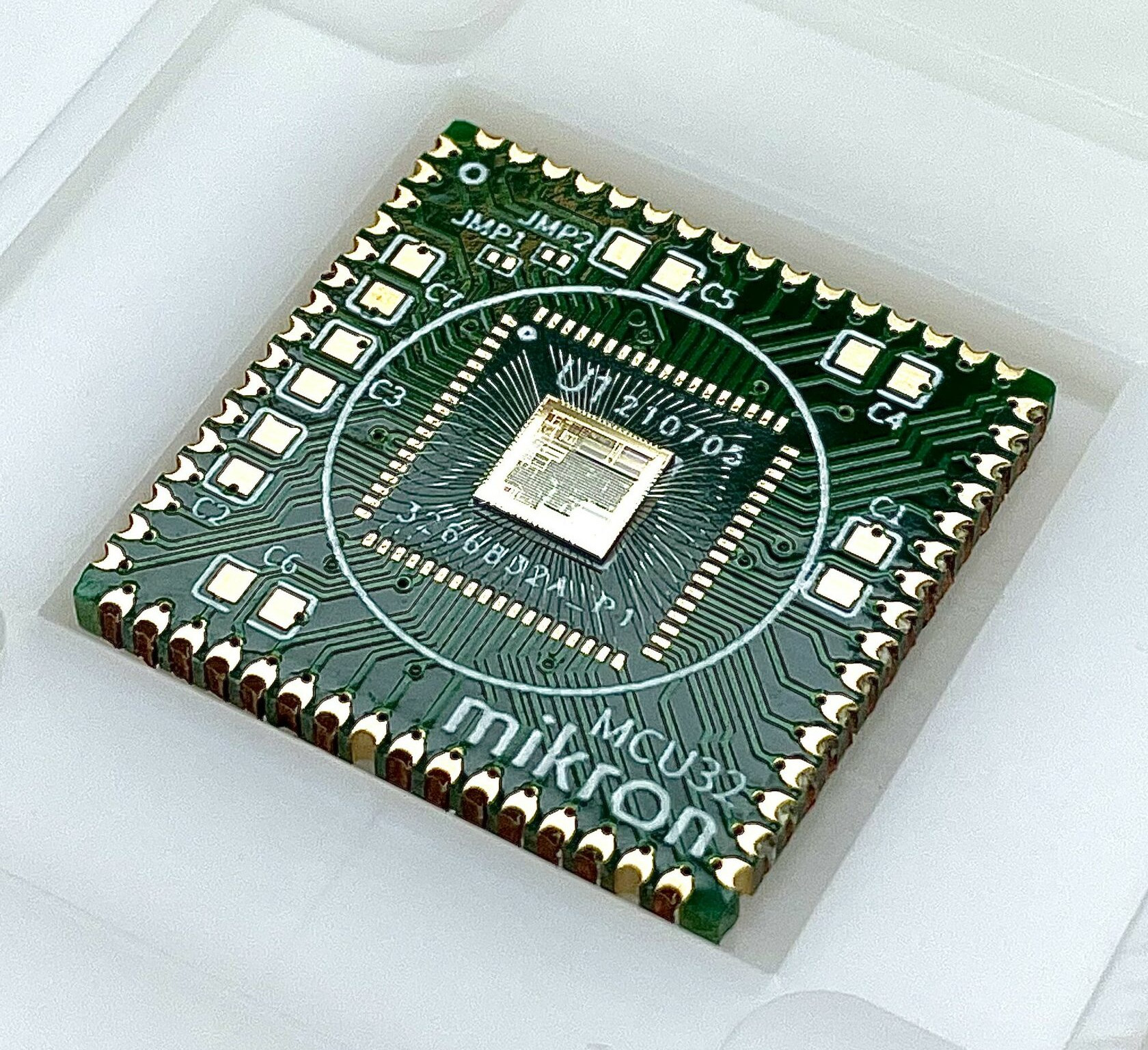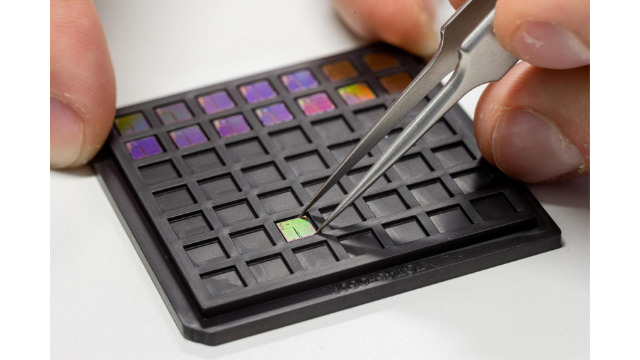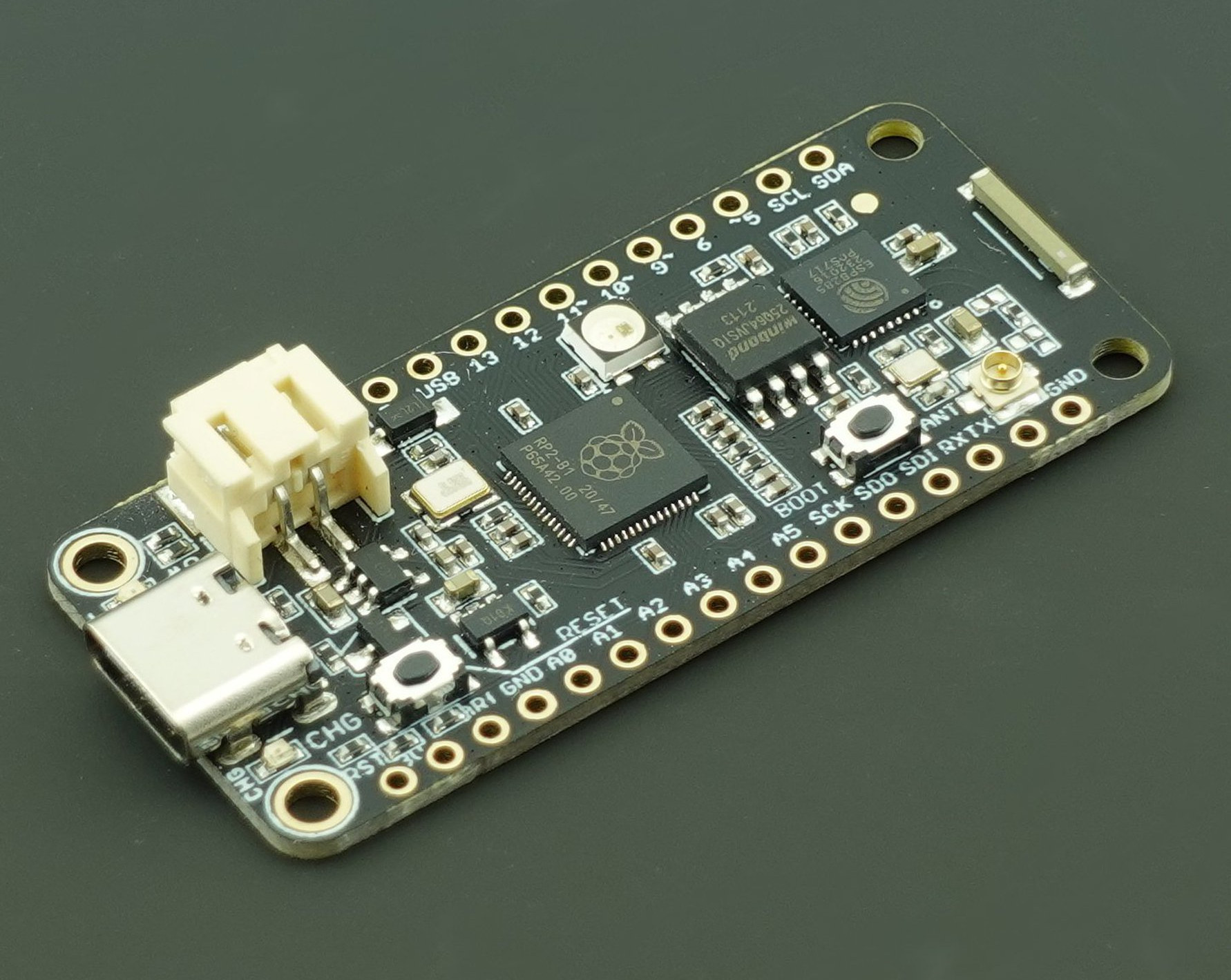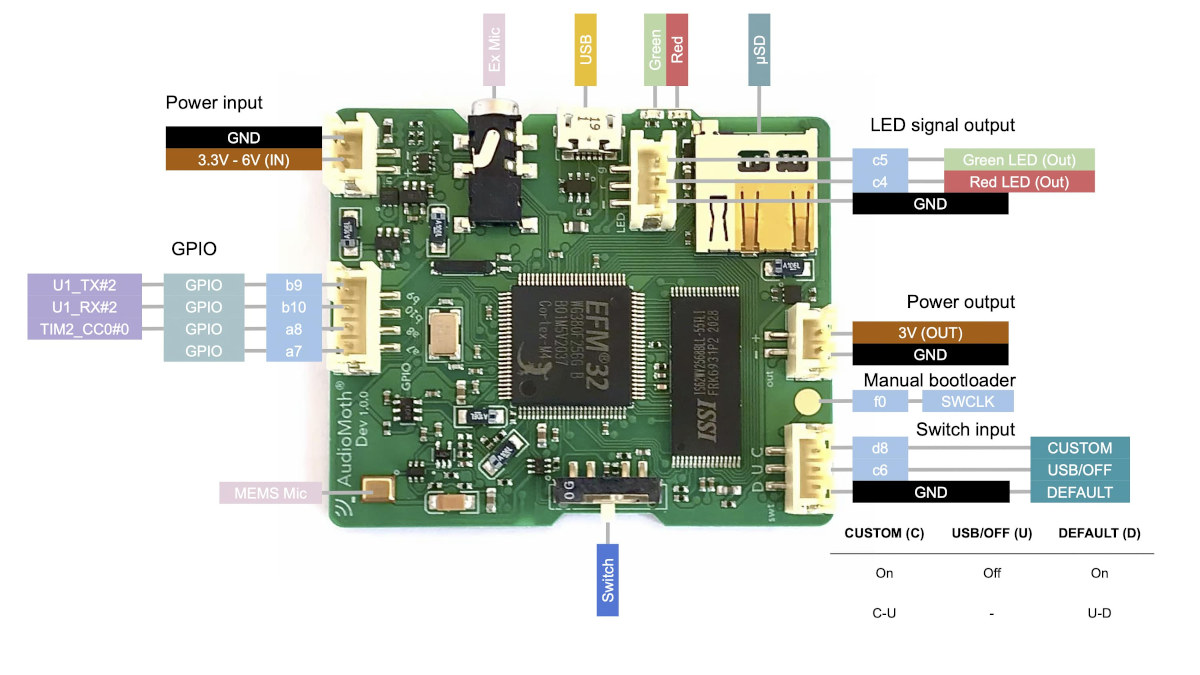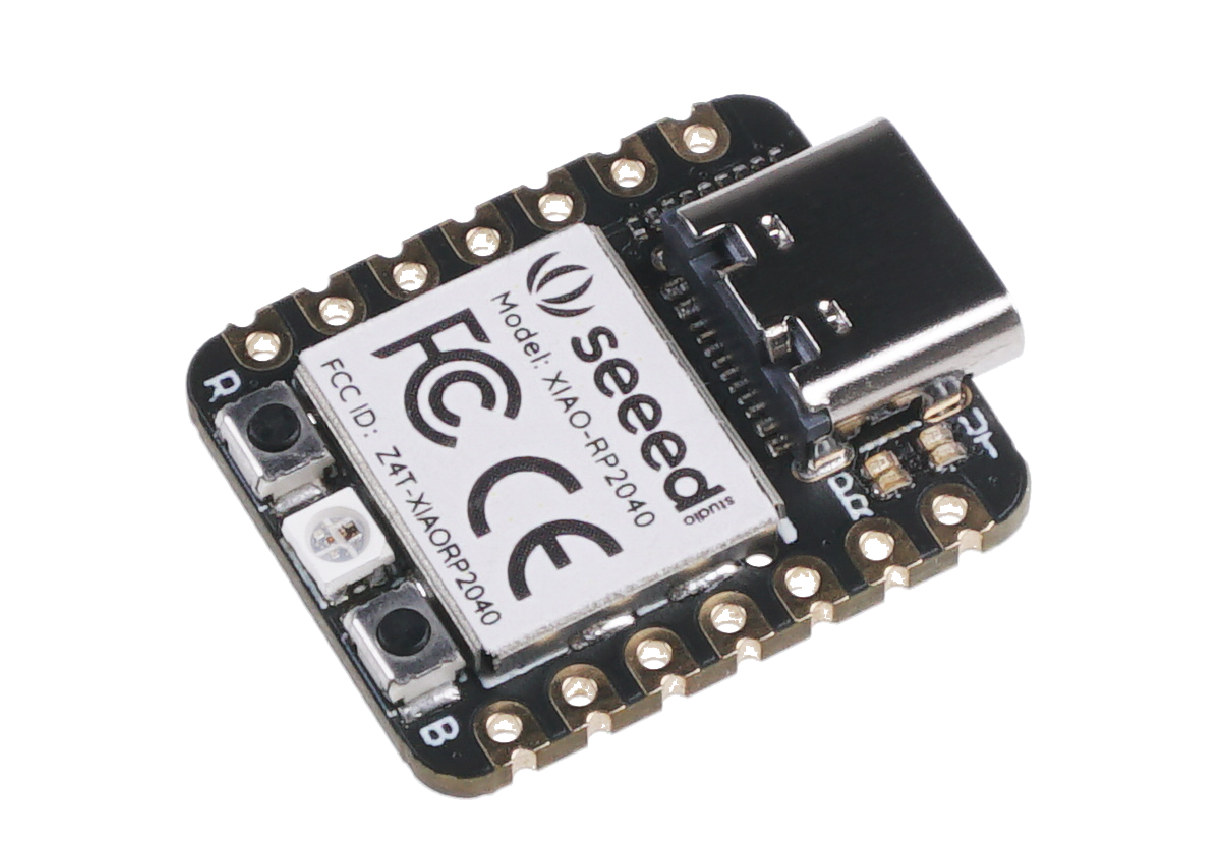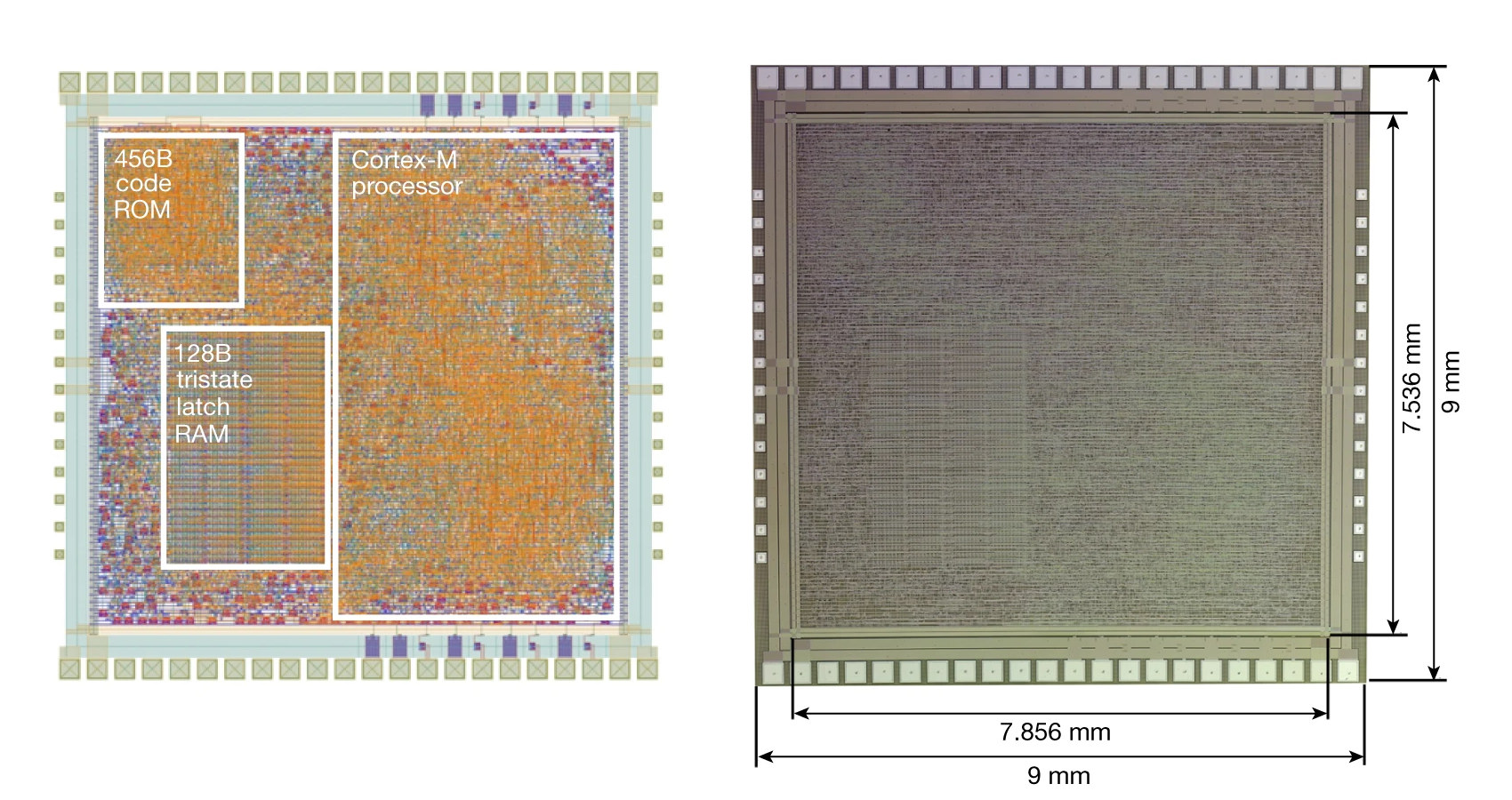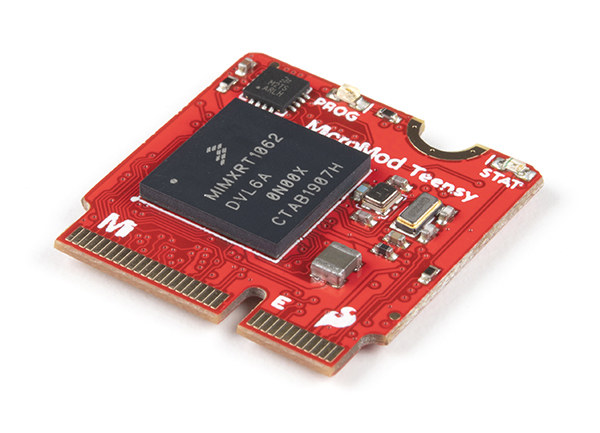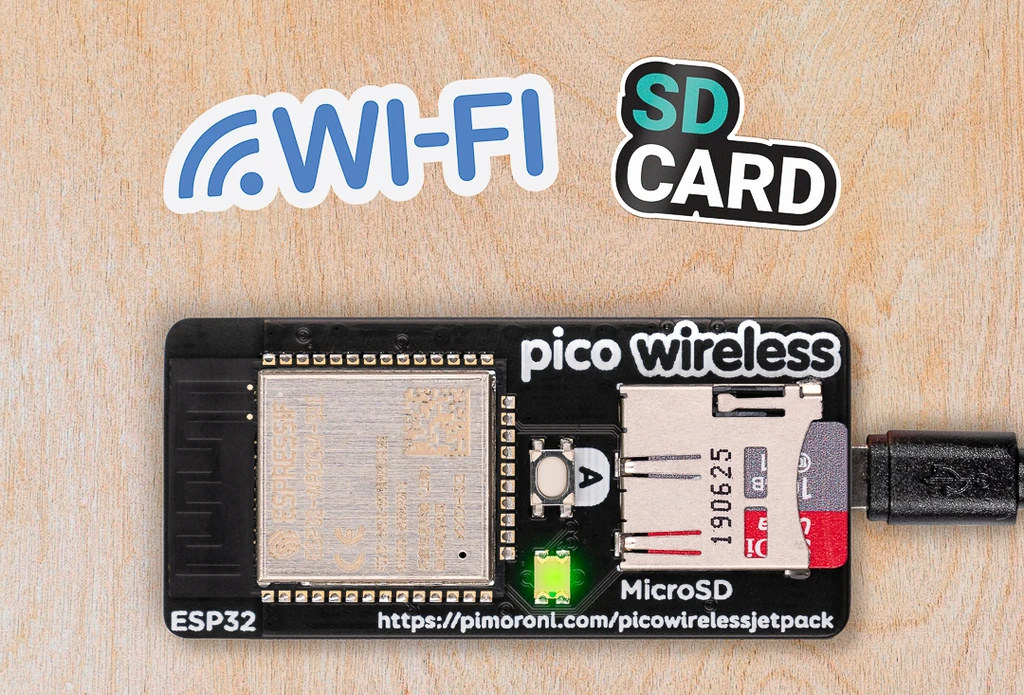The Mikron MIK32 is a 32-bit RISC-V microcontroller made in Russia with features similar to an STMicro STM32L0 Cortex-M0+ MCU that shows how RISC-V open-source architecture can help lower the barrier to entry, and let more companies design their own chips. The MIK32 microcontroller features CPU IP from Syntacore based in Saint Petersburg following the RV32IMC profile. Clocked at 32 MHz, the MCU comes with I2C, UART, SPI, ADC, DAC interfaces, as well as various timers, an interrupt controller, and more. Mikron MIK32 specifications: CPU Core – 32-bit RISC-V up to 32 MHz with 32 registers, embedded multiplier, debugger (TAP controller and JTAG interface), and interrupt controller Memory & Storage – 256 bytes OTP ROM, 16KB RAM, 8KB EEPROM Interfaces Storage I/F – SPI, Dual-SPI, Quad-SPI interfaces for NOR and NAND flash devices 4-channel DMA controller supporting low-power modes 2x I2C, 2x UART with synchronous mode support, 2x SPI 12-bit […]
Ultra-Low-Power RISC-V System-on-Chip features Adaptive Body Biasing Technology
CSEM and USJC together have developed an ultra-low-power RISC-V chip for electronic gadgets such as wearables. The semiconductor companies, from Switzerland and Japan respectively, have been in the market for a while, developing technologies for low-power chips. Their latest collaboration uses Adaptive Body Biasing (ABB) and Deeply Depleted Channel (DDC) to build an ultra-low-power RISC-V chip with all the required and necessary components. Originating from the labs of CSEM, the Adaptive Body Biasing dwells into the operating efficiency of all the modes of ON, Standby, and OFF. There has been the problem of power leakage in Standby and OFF operating modes, but the Adaptive Body Biasing technology helps design to minimize power leakage when the processor is not operating while keeping the best performance in ON mode. For most of the designs, the processor is in Standby mode waiting for the incoming data or the next event to be offered. […]
Challenger RP2040 WiFi board marries ESP8285 with Raspberry Pi RP2040
We’ve already seen Raspberry Pi RP2040 getting WiFi connectivity with boards like Pico Wireless Pack, Wio RP2040 mini, and Arduino Nano RP2040 Connect in ways that do not always make technical and commercial sense as in many cases, the WiFi microcontroller (e.g. ESP32) is more powerful than the Raspberry Pi microcontroller. But Invector Labs’ Challenger RP2040 WiFi board does make more sense, as the company combines Raspberry Pi RP2040 dual-core Cortex-M0+ MCU with an entry-level ESP8285 WiFi microcontroller, and also offers LiPo battery support, all that in the Adafruit Feather form factor. Challenger RP2040 WiFi board specifications: Main microcontroller – Raspberry Pi RP2040 dual-core Cortex-M0+ MCU @ 133MHz with 264KB SRAM Storage – 8MB flash Network microcontroller – Espressif ESP8285 2.4GHz WiFi 4 SoC with 1MB on-chip flash pre-flashed with Espressif’s AT command interpreter, connected to the main MCU over UART at up to 921600 bps; I/Os via Adafruit Feather […]
AudioMoth Dev is a full-spectrum acoustic development board based on SiLabs EFM32 MCU
AudioMoth is a low-cost, open-source acoustic monitoring device that can record uncompressed audio from 8000 up to 384,000 samples per second onto a microSD card. With sensitivity to audible sounds as well as ultrasonic frequency range, It is mostly used for monitoring wildlife including bats, cicadas, the rainforest, etc… The manufacturer, Open Acoustic Devices, is now offering the development board version with AudioMoth Dev, based on a Silicon Labs EFM32 Wonder Gecko MCU like the full device, for $79.99 + shipping on GrougGets. AudioMoth Dev board specifications: Wireless microcontroller – Silicon Labs EFM32 Wonder Gecko Cortex-M4F MCU @ 48MHz with 256kB Flash, 32kB RAM External RAM – 256kB SRAM Storage – MicroSD card slot Audio capture On-board analog MEMS microphone, sensitivity -38 dBV/Pa, 63 dBA SNR, 10Hz to 192kHz Sample rates up to 384kHz 3.5 mm jack socket for external electret condenser microphones (Note: the optional case not compatible when […]
Tiny Seeeduino XIAO board gets Raspberry Pi RP2040 MCU
Seeeduino XIAO is a tiny Arduino Zero compatible board with battery support that was launched last year with Microchip SAMD21G18 ARM Cortex-M0+ microcontroller at up to 48MHz. Seeed Studio has now launched the XIAO RP2040 board with the same form factor but upgrading to a more powerful Raspberry Pi RP2040 dual-core Cortex-M0+ microcontroller clocked at up to 133 MHz. XIAO RP2040 specifications: MCU – Raspberry Pi RP2040 dual-core Cortex M0+ up to 133 MHz, or even 252 MHz (48MHz default) with 264 kB SRAM Storage – 2MB SPI flash USB – 1x USB type C port for power and programming Expansion I/Os 2x 7-pin headers with 11x 4x analog inputs, 11x digital I/Os / PWM, 1x DAC, SPI, UART, and I2C; 2.54mm pitch 3.3V I/O voltage (not 5V tolerant) Misc – 1x user LED, power LED, 2x LEDs for serial port downloading, Reset Button/ Boot Button, RGB LED, SWD pads […]
PlasticArm is a functional, non-silicon, flexible Cortex-M0 microcontroller
Four years ago, we wrote about PragmatIC’s ultrathin and flexible plastic electronics circuit, with news that an ultra-cheap ARM Cortex M0 MCU made of plastic materials was coming soon. In this case, “soon” means about four years, but Arm has now finally announced PlasticArm, an ultra-minimalist, fully functional Cortex-M0-based SoC, with 128 bytes of RAM and 456 bytes of ROM that, with 18,000 gates, is twelve times more complex than previous state-of-the-art flexible electronics. PlasticArm specifications are similar to a standard Cortex-M0+ core with some notable exceptions: Cortex-M core in PlasticARM ARMv6-M architecture ISA – 16-bit Thunb and subset of 32-bit Thumb 32-bit data access and address width 86 instructions 2-stage pipeline Architectural register file mapped to RAM external to the CPU (instead of inside the CPU) Runs code from other Cortex-M CPUs 0.8-μm process There are two main advantages of PlasticArm. First, It’s flexible and integrated into paper, plastic, […]
MicroMod Teensy brings Teensy 4.0 board to M.2 form factor
Teensy 4.0, a low-cost board based on NXP i.MX RT1062 Arm Cortex-M7 crossover processor, is now getting a little brother with MicroMod Teensy following the same M.2 form factor as other Sparkfun MicroMod boards. Born from a collaboration between PJRC and Sparkfun, MicroMod Teensy has essentially the specs of Teensy 4.0 but with larger flash memory, and the board will be fully supported by the Teensyduino add-on to the Arduino IDE as noted by Paul Stoffregen on Twitter. MicroMod Teensy specifications: SoC – NXP i.MX RT1062 Arm Cortex-M7 processor at 600 MHz with 1024KB RAM (512KB is tightly coupled), Storage – 16MB serial flash (instead of 2MB on Teensy 4.0) M.2 MicroMod connector with USB Device up to 480Mbit/sec: Capable of enumerating as a USB keyboard, mouse, joystick, MIDI, audio, and more USB Host up to 480Mbit/sec: Capable of interfacing to USB flash drives, mice, keyboards, and more 7x Serial […]
Pico Wireless Pack adds ESP32 WiFi & Bluetooth module to Raspberry Pi Pico
Pimoroni Pico Wireless Pack is an add-on board for Raspberry Pi Pico adding a MicroSD card socket and ESP32 WiFi & Bluetooth module to the popular MCU board. While it’s a nice idea to add wireless connectivity to Raspberry Pi Pico, ESP32 is a dual-core Xtensa LX6 processor clocked at 160 to 240 MHz with WiFi, Bluetooth, and plenty of I/Os that should be able to handle most tasks better than Raspberry Pi RP2040 dual-core Cortex-M0+ processor clocked at 48 MHz by default, although we’ve also seen it overclocked up to 252 MHz. It comes with female headers that allow it to be inserted directly to the back of Raspberry Pi Pico has shown above, or into a “GPIO expander” board like the Pico Omnibus shown below through an SPI interface. Pico Wireless Pack specifications: Wireless module – ESP32-WROOM-32E WiFi 4 & Bluetooth 4.2/5.x module with PCB antenna, 4 MB […]


